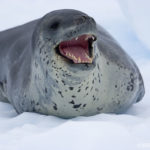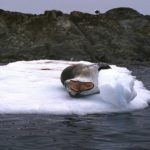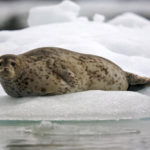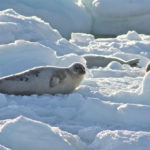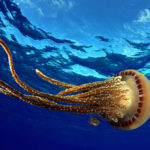20 interesting and fun facts about the sea leopard
 Its name, reminiscent of the terrible land predator, the sea leopard received for a reason. These creatures resembling ordinary good-natured seals are extremely dangerous. Of course, they themselves may become victims of larger marine predators, but their strength, dexterity and swiftness leave little chance for their own victims.
Its name, reminiscent of the terrible land predator, the sea leopard received for a reason. These creatures resembling ordinary good-natured seals are extremely dangerous. Of course, they themselves may become victims of larger marine predators, but their strength, dexterity and swiftness leave little chance for their own victims.
Zoologists attribute these animals to seals. However, even the townsfolk noticeable external similarity of these animals.
When the sea leopard opens its mouth underwater, attacking the victim, special muscles block its throat, preventing it from swallowing salt water. And his nostrils close when immersed in water by themselves.
Submerged under water, the sea leopard can hold its breath for up to 8-10 minutes. However, elephant seals can hold their breath for up to one and a half hours.
These animals lead a strictly solitary lifestyle. They meet their own kind only in the mating season.
In the mouth of a sea leopard there are two rows of teeth. All of them are sharp, like well-sharpened knives.
The body fat of this predator is much less than that of other seals. However, sea leopards do not freeze even in the Arctic seas.
Sea leopard does not disdain carrion, even if there is more recent prey nearby.
His body is capable of withstanding monstrous pressure. When hunting, a sea leopard is sometimes submerged 200-300 meters under water.
They are not too picky in food, attacking any prey that they can overcome. However, for some reason, some sea leopards prey, with rare exceptions, only on penguins. Apparently, they really like their meat.
On land, sea leopards are slow and clumsy, so running away from them is easy. But in the water they are surprisingly fast and agile.
Sea leopards live in the Southern Ocean, and the killer whale is the only predator more dangerous than them in these waters.
In total, there are now about 400 thousand individuals of these animals in the world.
They are inherent in a fair amount of aggressiveness. There have been cases when sea leopards jumped out of the water and attacked boats, powerlessly trying to get to the people in them.
Tired of swimming, sea leopards are usually chosen on drifting icebergs to relax.
The latest to date, a lethal attack by a sea leopard on humans was recorded in 2003.
In pursuit of fleeing prey, this predator may even follow it to land.
On average, sea leopards live about 25 years.
About half the food of this animal is varied krill. They also prey on seals, fish and penguins.
When swimming, sea leopards can accelerate to 40 km / h.
The largest individuals of the sea leopard, caught by researchers, weighed almost 600 kilograms.
